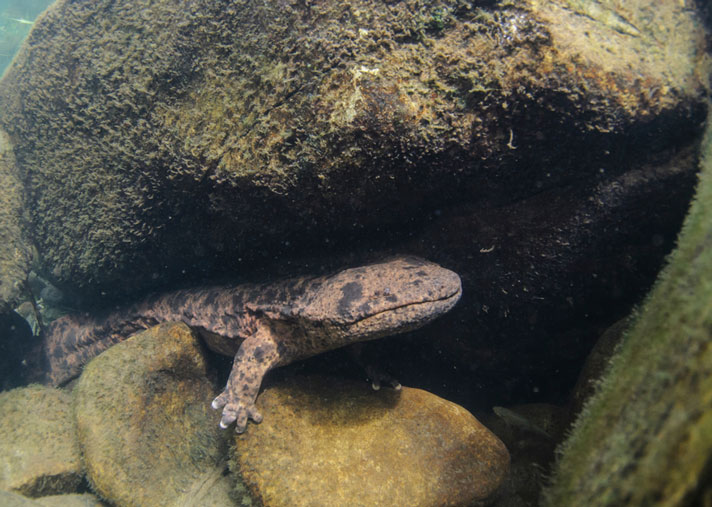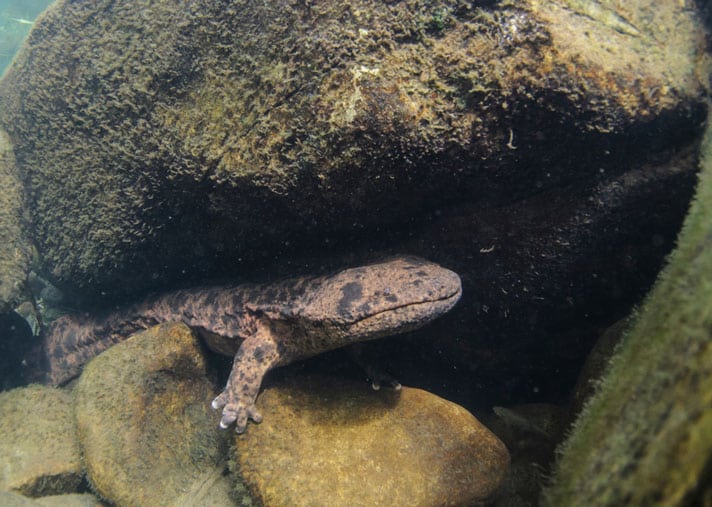The Japanese giant salamander is listed as near threatened by the IUCN due to pollution and habitat loss.
If you are in Honolulu, HI or will be visiting the island in the future, don’t forget to check out the Honolulu Zoo, and its newest residents, a trio of Japanese giant salamanders.

Martin Voeller/Shutterstock
The Japanese giant salamander is listed as near threatened by the IUCN due to pollution and habitat loss.
The zoo received three Japanese giant salamanders (Andrias japonicus) from the Asa Zoo in Hiroshima, Japan. The salamanders were donated to the zoo in February 2014 in honor of the 55th anniversary of the international relationship between the state’s capital city and Hiroshima. The amphibians, named Panda, Peace and Maru were welcomed into their new home February 19 by the mayor of Honolulu, Kirk Caldwell, Honolulu Zoo director Linda Santos, and Laura Debnar, the zoo’s reptile curator.
Japanese Giant Salamander Information
Japanese Giant Salamander to Headline New Honolulu Zoo Reptile and Amphibian Exhibit
Student in Japan Films Japanese Giant Salamander Near Drainage Canal
The zoo received four Japanese giant salamanders in November 2014 to complement the zoo’s then new giant salamander exhibit.
Japanese giant salamanders are known as Ōsanshōuo in Japanese, which translates to giant pepper fish. They can grow up to five feet in length and are the second largest salamander in the world. They can be found on Kyushu, Honshu, and Shikoku islands. The Chinese giant salamander (A. davidianus) is the largest in the world.
The amphibian is listed as near threatened by the IUCN due to pollution and habitat loss. They were once a food source for people which also detrimentally affected their populations. They now are protected by law.


